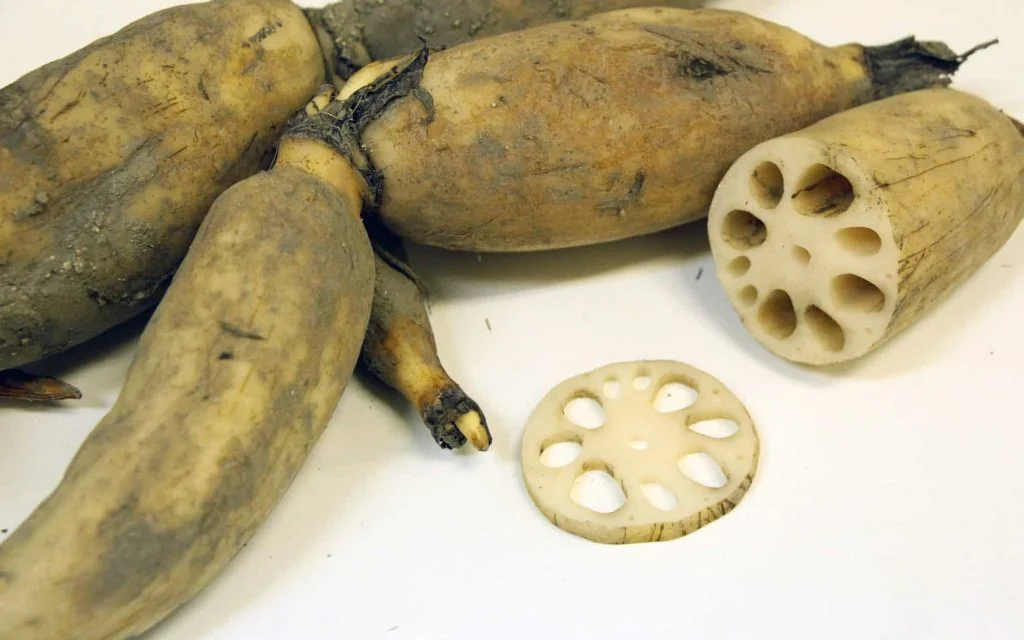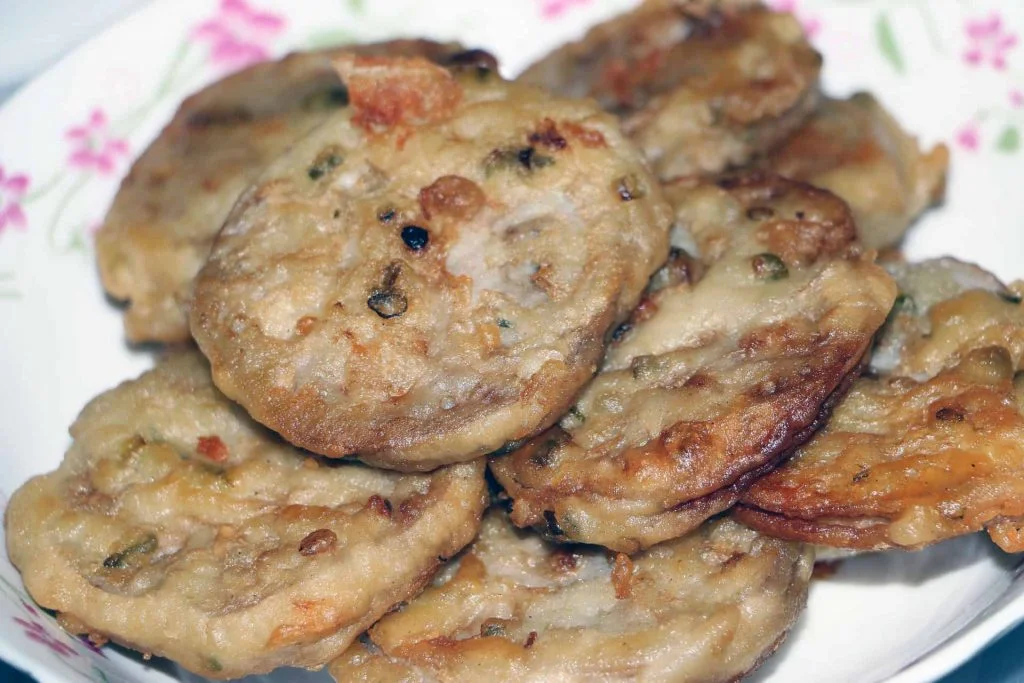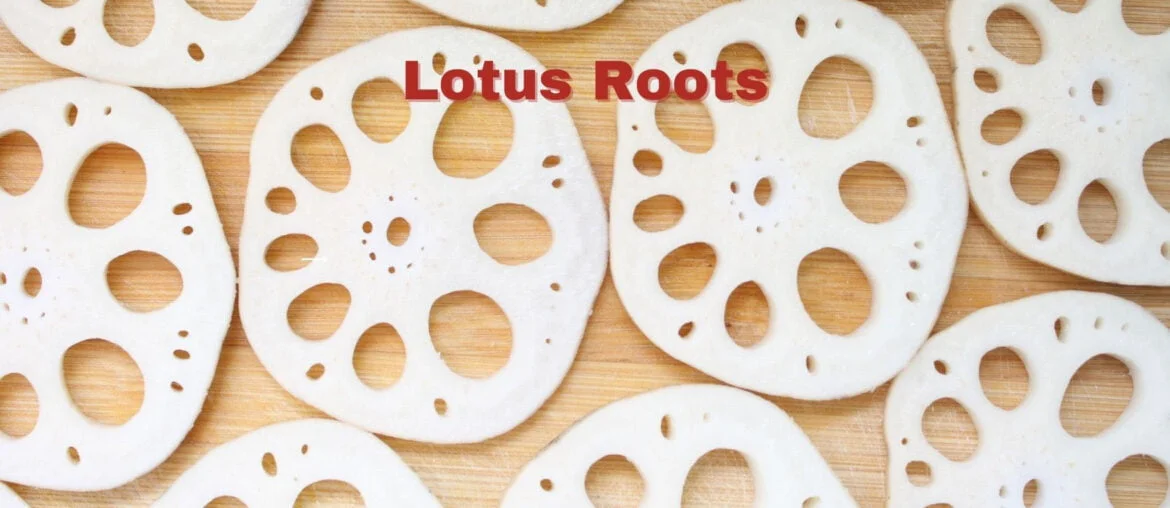Lotus root has been a favorite food of Asians since ancient times. But now it is also on the table of the common people. Its nutritional value has been recognized by food health scientists of all times. Today, let’s learn about lotus roots and their nutrition.
Lotus root is the swelling part of the underground stem of the lotus plant. It is short cylindrical, thick, and smooth with grey white or silver grey outer skin and white inner skin. The central part of the node is expanded, and there are several holes of different sizes. They are arranged symmetrically on the left and right. Its body is heavy, crisp, and tender.
There are two kinds of edible parts of lotus mainly.
The first type is the lotus root. Its rhizome is relatively large, with white skin, crispy and tender body. Also, it has a sweet taste and few lotus seeds.
The second type is the lotus seeds. It is a small grain with, slightly grey body, and it has many results.
Lotus root is the leading food as a vegetable. According to the researchers, every 100g edible part contains 2.3g protein, 0.1g fat, 18.1g carbohydrate, 18 mg calcium, 51 mg phosphorus, 4.4mg iron, and B and C vitamins.

Which lotus root is suitable for stewing and raw food?
Lotus root is sweet, rich in starch, protein, vitamin C and B1, as well as calcium, phosphorus, iron, and other inorganic salts. Lotus root meat is easy to digest. It is suitable for nourishing young and old.
Commonly used edible lotus root is divided into red lotus root, white lotus root, and twist lotus root.
The shape of the red lotus root is thin and long. Its skin is brown, yellow, and rough, with more starch, less water, glutinous but not crisp and tender. Also, red lotus root is suitable for stewing.
The white lotus root is fat, tender, smooth in appearance, silvery-white, crispy and moist, strong in sweetness, and suitable as raw food.
The twist lotus root is pink, rough in appearance, with more starch and suitable for cooking.
How to choose the best lotus root
1. Thick and short lotus root joints.
Choose thicker and shorter lotus root joints when buying so that the maturity is sufficient and the taste is better.
2. Long lotus root node spacing
The longer the distance between the lotus root nodes and the higher the maturity of the lotus root, the softer the taste.
3. Large vents
If the lotus root has been cut, you can look at the vents in the middle of the lotus root. The lotus roots with large vents are juicier and tasty.
4. With wet soil
The lotus root without wet mud is usually processed and cannot be stored. The lotus root with wet mud is better stored and kept in a cool place for about a week.
5. Yellow color and no peculiar smell
The skin of the lotus root should be smooth and yellowish-brown. If it is black or has a peculiar smell, it is not recommended to buy it.
6. The color should not be too white
Sometimes the sellers may soak lotus roots on the market in citric acid. As a result, the color turns white and is not recommended to buy.
Health functions of lotus root
Lotus root has the functions of clearing heat, cooling blood, hemostasis, and dispersing stasis. In addition, it has the effect of nourishing the heart, blood, spleen, and stomach. The nodus of the lotus root contains about 2% tannin and asparagine.
It has a better hemostatic and astringent effect than fresh lotus root and can also detoxify crabs. In addition, Lotus flower, leaf, stem, whisker, canopy, lotus seed, and lotus seed heart have their own functions, which can be used as medicine.
Fresh lotus root contains as much as 20% carbohydrate, protein, various vitamins, and minerals. It can be eaten as a fruit as well as a cooking delicacy. However, if it is processed with sugar for candied fruit or made into lotus root powder, it has a unique flavor.

The benefits of eating lotus root
The medicinal effect of lotus root is very considerable. It is regarded as the best product for removing stasis and promoting fluid production.
Lotus root has many benefits, such as
- Eliminating blood stasis and clearing heat
- Eliminating boredom and thirst
- Stopping the flow of blood(nosebleed, blood urination, hematochezia, uterine bleeding, etc.)
- Settling phlegm, etc.
Lotus root’s nature changes from cool to warm after being cooked. It has the features of stimulating the spleen, appetizing the stomach, nourishing the blood, and energizing the internal organs. That means which is very suitable for the elderly.
Lotus root raw food can clear heat and moisten the lung, cool blood, and move stasis.
Cooked lotus root can the spleen stimulating, appetizing, and stable the internal essence.
Older adults often eat lotus root, which can adjust the appetizer, benefit the blood and marrow, calm the mind, refresh the brain, and prolong life.
The lotus root has the effect of clearing the lung and hemostasis, which is the most suitable for patients with tuberculosis.
People who don’t like eating raw can also stew chicken and stew, nourishing and curing diseases. In particular, lotus root powder, rich in nutrition and easy to digest. It is an excellent tonic for women and children, old and weak. It is often made with boiled water and eaten for a long time. Also, it can calm the nerves, appetizer, nourish the marrow and blood, light the body and prolong life.
Lotus root calories 100g – Table
| Nutrients | Unit | Quantity |
|---|---|---|
| Calories | kcal | 70 |
| Protein | g | 1.9 |
| Fat | g | 0.2 |
| Carbohydrate | g | 16.4 |
| Dietary fiber | g | 1.2 |
| Vitamin A | μg | 3 |
| Carotene | μg | 20 |
| Vitamin B1 | mg | 0.09 |
| Vitamin B2 | mg | 0.03 |
| Niacin | mg | 0.3 |
| Vitamin B6 | mg | 0.05 |
| Folic acid | μg | 10.3 |
| Vitamin C | mg | 44 |
| Vitamin E | mg | 0.73 |
| Calcium | mg | 39 |
| Phosphorus | mg | 58 |
| Potassium | mg | 243 |
| Sodium | mg | 44.2 |
| Magnesium | mg | 19 |
| Iron | mg | 1.4 |
| Zinc | mg | 0.23 |
| Selenium | μg | 0.39 |
| Copper | mg | 0.11 |
| Manganese | mg | 1.3 |
How to eat lotus root for common remedies?

Due to the influence of ancient Chinese medicine, at present, in South Korea, Japan, Hong Kong, and Taiwan, people attach great importance to the therapeutic effect of lotus root. And there are many practical methods.
Cold throat pain, with lotus root juice and egg white gargle, has a special effect. Egg white can moisten the throat and relieve cough. In addition, the lotus root can eliminate fatigue and comfort spirit.
Method
- Peel and wash the lotus root.
- Mash and extrude the lotus root juice.
- Mix it with the egg white (one egg can be used three times).
- Store it in a cool place.
- Then rinse the throat with it.
Lotus root soup can also eliminate oral inflammation. Cut lotus root, add water, and make soup. Rinse 5-6 times a day.
Suffering from bronchitis, lotus root juice, and lotus skin are also effective. So you don’t have to cut it. Instead, wash the lotus root and take the juice. Lotus root juice also affects patients with bloody sputum in the morning and hoarseness at night.
Lotus root soup can also prevent and cure coughing. Lotus root with skin can be cut into thin slices and boiled together with caramel for drinking. In addition, part of the lotus root node is crushed to make juice for drinking, relieving cough and chest tightness. When fever and thirst are serious, you can drink fresh lotus root juice, reducing fever and relieving thirst.
Precautions of eating lotus root
People with spleen deficiency and stomach cold and those who are prone to diarrhea should not eat raw lotus root. Raw lotus root is cool in nature. Raw lotus root is more difficult to digest and hinders the spleen and stomach, so it is advisable to eat cooked lotus root.
Elderly, young women and children, weak and ill people are especially suitable to eat lotus roots. Also, suitable for people with high fever, vomiting blood, hypertension, liver disease, loss of appetite, iron deficiency anemia, and malnutrition. The lotus root is cold, so pregnant women should not eat it too early in pregnancy.
It is best not to eat lotus root raw. Some lotus roots are parasitic with worms, which can easily cause diseases. In addition, when people eat raw lotus root with cysts, the cysts will develop into adults in the small intestine. The adults attach to the intestinal mucosa, causing intestinal damage and ulcers, causing abdominal pain, diarrhea, indigestion, facial edema in children, Developmental delay, mental retardation, and other symptoms.







